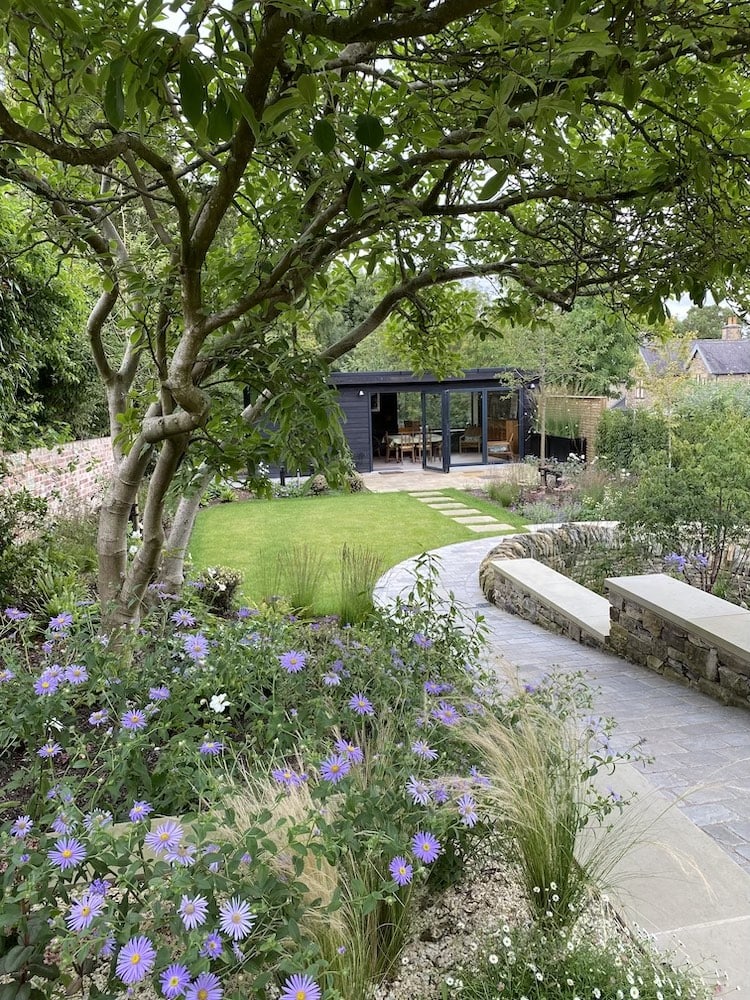Accessible Garden Design
For us as garden designers there is nothing more rewarding than creating a garden that changes the way someone lives. Our company tagline ‘changing the world you live in’ reflects exactly that. We know how important gardens are – as a sanctuary, a place to host, or a place to relax. Having a garden that is designed around your individual wants and needs can be life changing; accessibility restrictions shouldn’t stop you from enjoying your own home.
It is worth noting that there is no one-size-fits-all formula when creating an accessible garden and different people will have different needs. Today I’m going to go discuss designing for wheelchair users and people with sight impairments.
How to Design an Accessible Garden
Designing for wheelchairs users
Firstly, a wheelchair friendly garden does not need to (and in our opinion shouldn’t) look like it has been designed for wheelchair access. Accessible design should disappear into the background, allowing for ease of moving through the space, without announcing ‘this is an accessible garden!’
The use of ramps and sloping paths can help to navigate thresholds and level changes, without the need for steps. The steepness of the path is key to comfortable use. A guide is that the gradient should not exceed a 1:12 ratio, and having flat landings along the way (ideally every 75cm of height increase) allows space to rest. Designing the path to be a smooth curve can make it easier to move through the garden than having a path with sharp turns.
There are other things to consider when designing paths and routes through the garden – will two wheelchairs need to pass each other? Is there space to turn around? Is there a gate?
1.2m is a comfortable path width for a single wheelchair, but 2m is generally enough for two wheelchairs to pass each other. Often overlooked is manoeuvring space, particularly on areas where garden furniture can eat into free space – good practice is to allow a wheelchair a 1.5m turning circle. Gates are often needed in gardens, but they are often difficult to use in a wheelchair. For a gate to be wheelchair accessible, at least an 85cm opening is needed, and handles between 75cm and 1m high are easiest to use.
As well as the shape and size of gates, paths and patios, the choice of material is important. Lose gravel and wheels don’t go well together, but there are some great products out there, such as self-binding gravel or resin bound gravel that are wheelchair friendly. There are also certain things to be mindful of when choosing paving for wheelchair use. Joints between paving slabs over 10mm wide can become a trap for wheels, and stone that has a very smooth finish doesn’t always offer enough grip for wheels, particularly on ramping paths.

Designing for blind or partially sighted users
When designing a garden for someone who is blind or partially sighted, incorporating elements that stimulate other senses (touch, hearing and smell) is important. Landmark items can be used to help you know where you are within the space. An example of this could be a bubbling water feature, which allows you orientate yourself within the garden by listening for the sound of the water. Scented plants are another way to create a landmark – your sense of smell can tell you where in the garden you are. Or perhaps different surface textures – moving from gravel onto paving tells you that you have arrived in a different zone of the garden. Texture, sounds and smells are not only helpful ways to navigate, they are ways for all of us to enjoy the garden. Imagine feeling the sun on your face and breathing in the scent of roses whilst listening to ornamental grasses swaying in the wind. Bliss.
For someone who is partially-sighted sensory elements can be combined with contrasting colours as a way to make the garden more accessible. This could be by visually defining the edges of paths or steps in a lighter colour that contrasts to the darker surroundings. Perhaps having a handrail feels safer and more comfortable, and making this stand out against the backdrop through contrasting colours can make the garden that little bit simpler to use.
Our gardens can and should be as unique as us and there are a myriad of ways that gardens can be designed to be accessible. As garden designers it is our job to get to know you, and to work out exactly what you want and need, to help make your garden your happy place.
First published March 2023
Emily Kaye
I'm Emily Kaye, a garden designer from the south of England and I've been in this industry for over 10 years. Design & plants are my passion in my professional life, whereas in my personal life I'm passionate about yoga, creativity and innovation. I'm always looking for something new to make or do.



